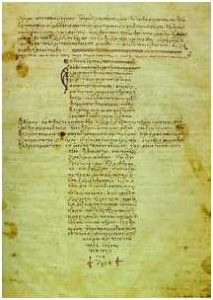Winning Against Euthanasia

El suicidio asistido.
17/05/2018
Boletín de CíViCa Nº 59, 30 de Abril de 2018
20/05/2018Por Deborah M. Piroch, Publicado en Human Life International el 1 de Enero  de 2018
de 2018
Government Says No to Assisted Suicide
September 2017 the House of Representatives introduced a bipartisan bill, saying no to assisted suicide. Euthanasia “puts everyone, including those most vulnerable, at risk of deadly harm and undermines the integrity of the health care system.” The text of the bill may be found here. Having been referred to the Subcommittee on Health, no further action has yet been taken. However, House Constitutional Resolution 80 says it is:
Resolved by the House of Representatives (the Senate concurring), that it is the sense of the Congress that the Federal Government should ensure that every person facing the end of their life has access to the best quality and comprehensive medical care, including palliative, in-home, or hospice care, tailored to their needs and that the Federal Government should not adopt or endorse policies or practices that support, encourage, or facilitate suicide or assisted suicide, whether by physicians or others.
“Right to Die” No Such Thing
There have been over 200 attempts by 30 states that have rejected suicide since the 1990s. In the U.S. the only states that permit physician assisted suicide are Washington, Oregon, Vermont, Washington, D.C. and the procedure is disputed in Montana. While this number is still unacceptable, the victories are relatively few given the huge numbers of attempts to legalize. In an interview with CNA/EWTN news, Alex Schadenberg of the Canada’s Euthanasia Prevention Coalition, said euthanasia and physician assisted suicide are really not a movement for a “right to die” but instead an emotional reaction of people who naturally fear suffering.
“The [euthanasia] movement has lost more battles than probably any other movement in the history of the U.S., and yet there’s supposedly a tidal wave in favor. Rather than freedom and autonomy, euthanasia and assisted suicide are about abandonment. It’s about abandoning people in a time of need, it’s not about freedom.”
U.S. Physicians Reject Euthanasia and Assisted Suicide
In a position-paper published late last 2017, the American College of Physicians (ACP) has also outright rejected any support for euthanasia or physician assisted suicide.
In the paper’s abstract, the College remains unsupportive of euthanasia.
“It is problematic given the nature of the patient–physician relationship, affects trust in the relationship and in the profession, and fundamentally alters the medical profession’s role in society. Furthermore, the principles at stake in this debate also underlie medicine’s responsibilities regarding other issues and the physician’s duties to provide care based on clinical judgment, evidence, and ethics. Society’s focus at the end of life should be on efforts to address suffering and the needs of patients and families, including improving access to effective hospice and palliative care. The ACP remains committed to improving care for patients throughout and at the end of life.”
Let us again stress that palliative care, improved hospice options, pain relief and accompanying strategies are the key to helping people cope with chronic disabilities or terminal illness. A patient’s wishes, moreover, are not “absolute” and his/her physical condition – for instance depression – can cause requests for unhelpful treatment — for instance, assisted suicide — that would compromise the role of the physician as a “moral agent.” The duty of the physician must be able to “practice high-value care in the best interests of the
Although the Hippocratic Oath is sadly no longer taken, it would be wise to internalize some its promises: “I will use treatment to help the sick according to my ability and judgment, but never with a view to injury and wrong-doing. Neither will I administer a poison to anybody when asked to do so, nor will I suggest such a course. Similarly, I will not give to a woman a pessary to cause abortion. But I will keep pure and holy both my life and my art.”


